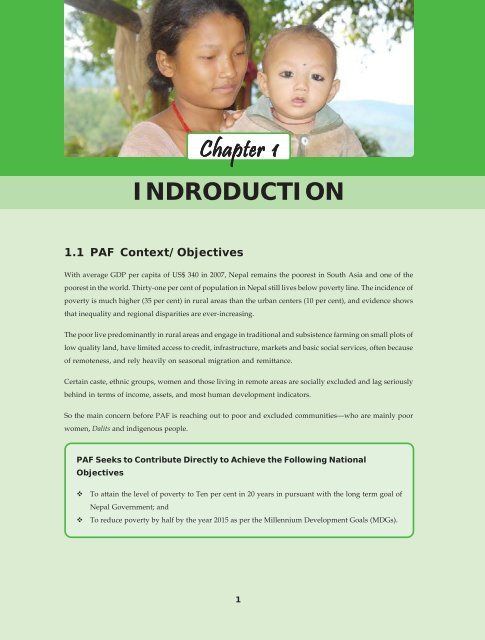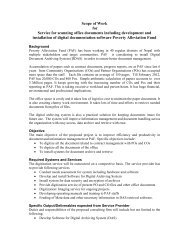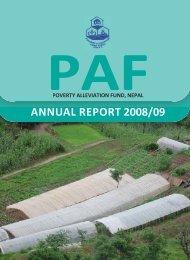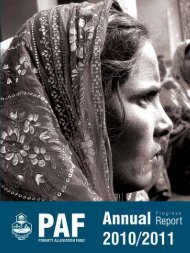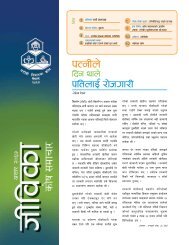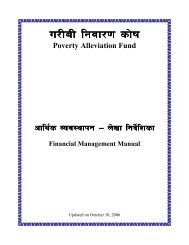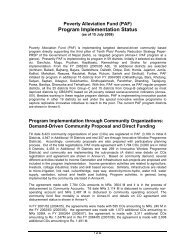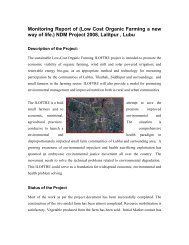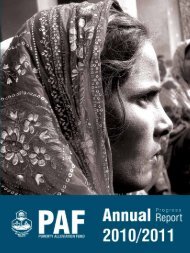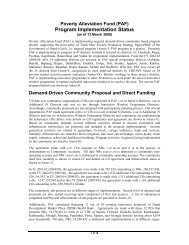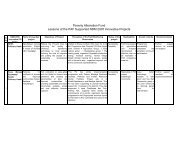Annual Report 2007/2008 - Poverty Alleviation Fund, Nepal
Annual Report 2007/2008 - Poverty Alleviation Fund, Nepal
Annual Report 2007/2008 - Poverty Alleviation Fund, Nepal
Create successful ePaper yourself
Turn your PDF publications into a flip-book with our unique Google optimized e-Paper software.
Chapter 1INDRODUCTION1.1 PAF Context/ObjectivesWith average GDP per capita of US$ 340 in <strong>2007</strong>, <strong>Nepal</strong> remains the poorest in South Asia and one of thepoorest in the world. Thirty-one per cent of population in <strong>Nepal</strong> still lives below poverty line. The incidence ofpoverty is much higher (35 per cent) in rural areas than the urban centers (10 per cent), and evidence showsthat inequality and regional disparities are ever-increasing.The poor live predominantly in rural areas and engage in traditional and subsistence farming on small plots oflow quality land, have limited access to credit, infrastructure, markets and basic social services, often becauseof remoteness, and rely heavily on seasonal migration and remittance.Certain caste, ethnic groups, women and those living in remote areas are socially excluded and lag seriouslybehind in terms of income, assets, and most human development indicators.So the main concern before PAF is reaching out to poor and excluded communities—who are mainly poorwomen, Dalits and indigenous people.PAF Seeks to Contribute Directly to Achieve the Following NationalObjectivesTo attain the level of poverty to Ten per cent in 20 years in pursuant with the long term goal of<strong>Nepal</strong> Government; andTo reduce poverty by half by the year 2015 as per the Millennium Development Goals (MDGs).1


